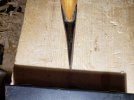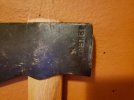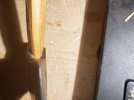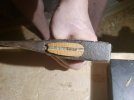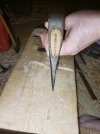Also,i came across this curious old thread:https://www.bladeforums.com/threads/whats-this.1417138/
(Very cool link there among other things by Steve about Davistown museum).
In the photos in the beginning,the nasty looking stuff inside the Front of the eye is most definitely the inserted bit coming in clear into the eye.
It's done that way quite deliberately,as the always-weak forge-weld can take drifting a bit better,with drift bearing directly on HCS insert.
However,drifting is Very rough on fresh welds,and only survives by using strategy,and the best strategy is where all welds resist forces in Shear,that's what forge-welding does best.
(any and all of my work is more than likely to have similar,and worse,horseshit inside the eye,guaranteed! )
)
(Very cool link there among other things by Steve about Davistown museum).
In the photos in the beginning,the nasty looking stuff inside the Front of the eye is most definitely the inserted bit coming in clear into the eye.
It's done that way quite deliberately,as the always-weak forge-weld can take drifting a bit better,with drift bearing directly on HCS insert.
However,drifting is Very rough on fresh welds,and only survives by using strategy,and the best strategy is where all welds resist forces in Shear,that's what forge-welding does best.
(any and all of my work is more than likely to have similar,and worse,horseshit inside the eye,guaranteed!






